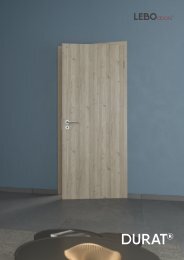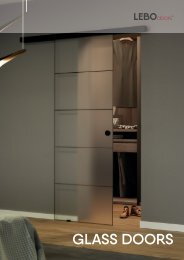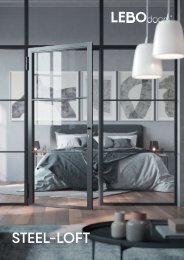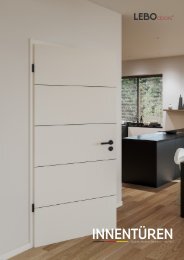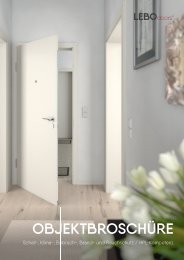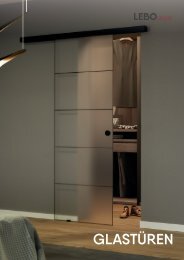You also want an ePaper? Increase the reach of your titles
YUMPU automatically turns print PDFs into web optimized ePapers that Google loves.
The frame surrounds the door and is firmly attached to the wall surrounding the door. It is used to secure the<br />
door leaf in place. This is performed using the hinges attached to the frame and to the door leaf. Frames are<br />
available in a wide range of visual and functional designs. According to the combination of frame and door<br />
leaf used, doors can be described as being either “full-flush” or “flush-optic” doors.<br />
Full-flush doors<br />
In full-flush doors, the door leaf and the frame are<br />
flush. These are particularly effective in very modern<br />
rooms.<br />
Flush-optic doors<br />
The door leaf is rebated. Seen from the opening<br />
side, however, it looks like a full-flush door. From<br />
the closing side, you can see a shadow gap running<br />
around it. A normal frame can be used for this<br />
model. This element is available with the standard<br />
surface variety.<br />
Flush - The door leaf is flush and in its external<br />
appearance it is on the same level as the sealing<br />
level.<br />
Use Tectus-hinges TE 340 or Euro-hinge 3D<br />
Flush-optic - The door leaf is rebated and closes<br />
flush with the frame.<br />
Use Tectus-hinges TE 240<br />
Important note<br />
In full-flush and flush-optic door sets, the door surface does not close completely flush with the architrave of the door<br />
frame.<br />
137





